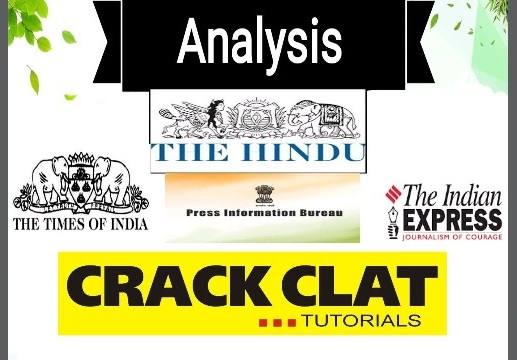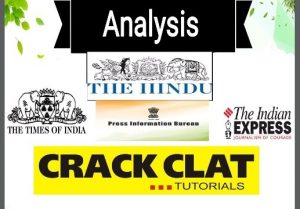Analysis of Important Editorials for CLAT – Law and disorder
Law and disorder – Disproportionate attention to the Supreme Court hampers justice
CONTEXT:
- Several inadequacies in the justice delivery system lie hidden as disproportionate attention is given to the Supreme Court.
2. Today, the Supreme Court finds itself in a predicament as a justice delivery system. - The citizens of the country expect the institution and its constituents to be ideal, and the challenge of the Supreme Court is to come to terms with that reality.
- However, it is not the Supreme Court alone that matters in the justice delivery system. A few important inadequacies have been discussed below.
SPENDING ON JUDICIARYING:
- Most often, the issue of spending on judiciary is equated with a call for increasing the salaries of judges and providing better court infrastructure. Such perceptions are unfortunate.
- India has one of the most comprehensive legal aid programmes in the world, the Legal Services Authority Act of 1987 – Under this law, all women, irrespective of their financial status, are entitled to free legal aid.
- Scheduled Castes and Scheduled Tribes and children too are entitled to free legal aid.
- This means that a significant proportion of the population falls — or is supposed to fall — under a free legal aid regime. However, in reality, this law is a dead letter. There has been little effort on the part of successive governments to provide a task force of carefully selected, well-trained and reasonably paid advocates to provide these services.
- In comparison, the system of legal aid in the U.K. identifies and funds several independent solicitor offices to provide such services.
- If support is withdrawn, many solicitor offices that provide these invaluable services would collapse and with that, the rule of law. India is yet to put in place anything similar to this.
POOR JUDGE-POPULATION RATIO:
- The judge-population ratio provides one of the most important yardsticks to measure the health of the legal system.
- The U.S. has about 100 judges per million population. Canada has about 75 and the U.K. has about 50. India, on the other hand, has only 19 judges per million population.
- Of these, at any given point, at least one-fourth is always vacant.
- While much is written on vacancies to the Supreme Court and the High Courts, hardly any attention is focused on this gaping inadequacy in lower courts which is where the common man first comes into contact (or at least should) with the justice delivery system.
- These inadequacies are far more important to the common man than the issues relating to the apex court that are frequently highlighted in the public space.
- In All India Judges Association v. Union of India (2001), the Supreme Court had directed the Government of India to increase the judge-population ratio to at least 50 per million population within five years from the date of the judgment. This has not been implemented.
ACCESS TO JUSTICE:
- Though ‘access to justice’ has not been specifically spelt out as a fundamental right in the Constitution, it has always been treated as such by Indian courts.
- In Anita Kushwaha v. Pushpa Sadan (2016), the Supreme Court held unambiguously that if “life” implies not only life in the physical sense but a bundle of rights that make life worth living, there is no justice or other basis for holding that denial of “access to justice” will not affect the quality of human life.
- It was for the first time that the Supreme Court had attempted a near-exhaustive definition of what “access to justice” actually means.
- Further, the court pointed out four important components of access to justice.
WAY FORWARD:
- The SC pointed out the need for adjudicatory mechanisms – It said that the mechanism must be conveniently accessible in terms of distance and that the process of adjudication must be speedy and affordable to the disputants.
- The state in all its glorious manifestations — the executive, judiciary and the legislature need to draw out a national policy and road map for clearing backlogs and making these concepts real.
CONCLUSION:
- A disproportionate amount of attention that is given to the functioning of the Supreme Court, important as it is, distracts from the hard realities of the justice delivery system of India.
- Even if the apex court achieves the distinction of being “ideal” in the near future, a fine mind alone is of little avail if the rest of the body lies disabled, as the justice delivery system is today.

